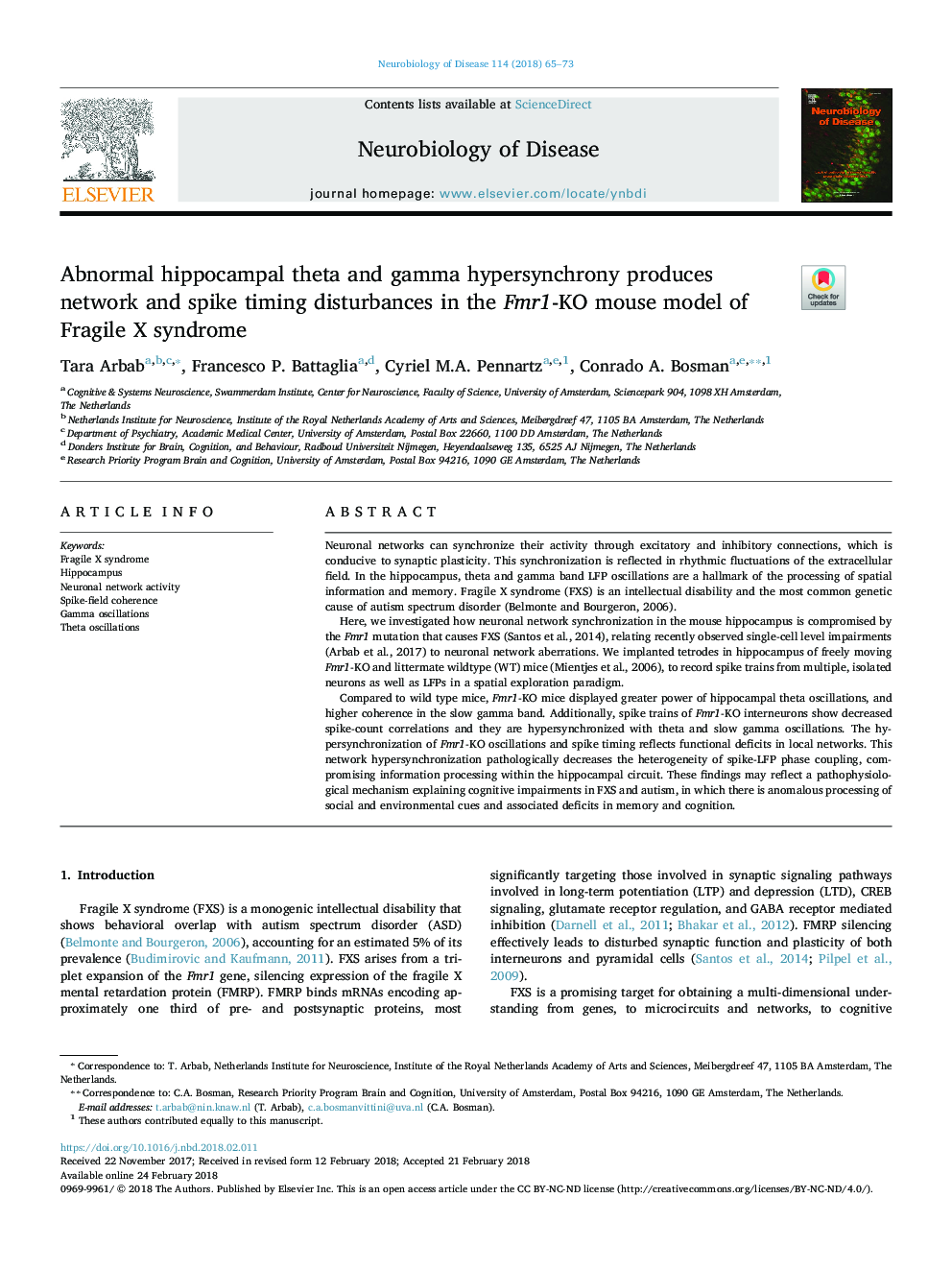| Article ID | Journal | Published Year | Pages | File Type |
|---|---|---|---|---|
| 8686385 | Neurobiology of Disease | 2018 | 9 Pages |
Abstract
Compared to wild type mice, Fmr1-KO mice displayed greater power of hippocampal theta oscillations, and higher coherence in the slow gamma band. Additionally, spike trains of Fmr1-KO interneurons show decreased spike-count correlations and they are hypersynchronized with theta and slow gamma oscillations. The hypersynchronization of Fmr1-KO oscillations and spike timing reflects functional deficits in local networks. This network hypersynchronization pathologically decreases the heterogeneity of spike-LFP phase coupling, compromising information processing within the hippocampal circuit. These findings may reflect a pathophysiological mechanism explaining cognitive impairments in FXS and autism, in which there is anomalous processing of social and environmental cues and associated deficits in memory and cognition.
Related Topics
Life Sciences
Neuroscience
Neurology
Authors
Tara Arbab, Francesco P. Battaglia, Cyriel M.A. Pennartz, Conrado A. Bosman,
